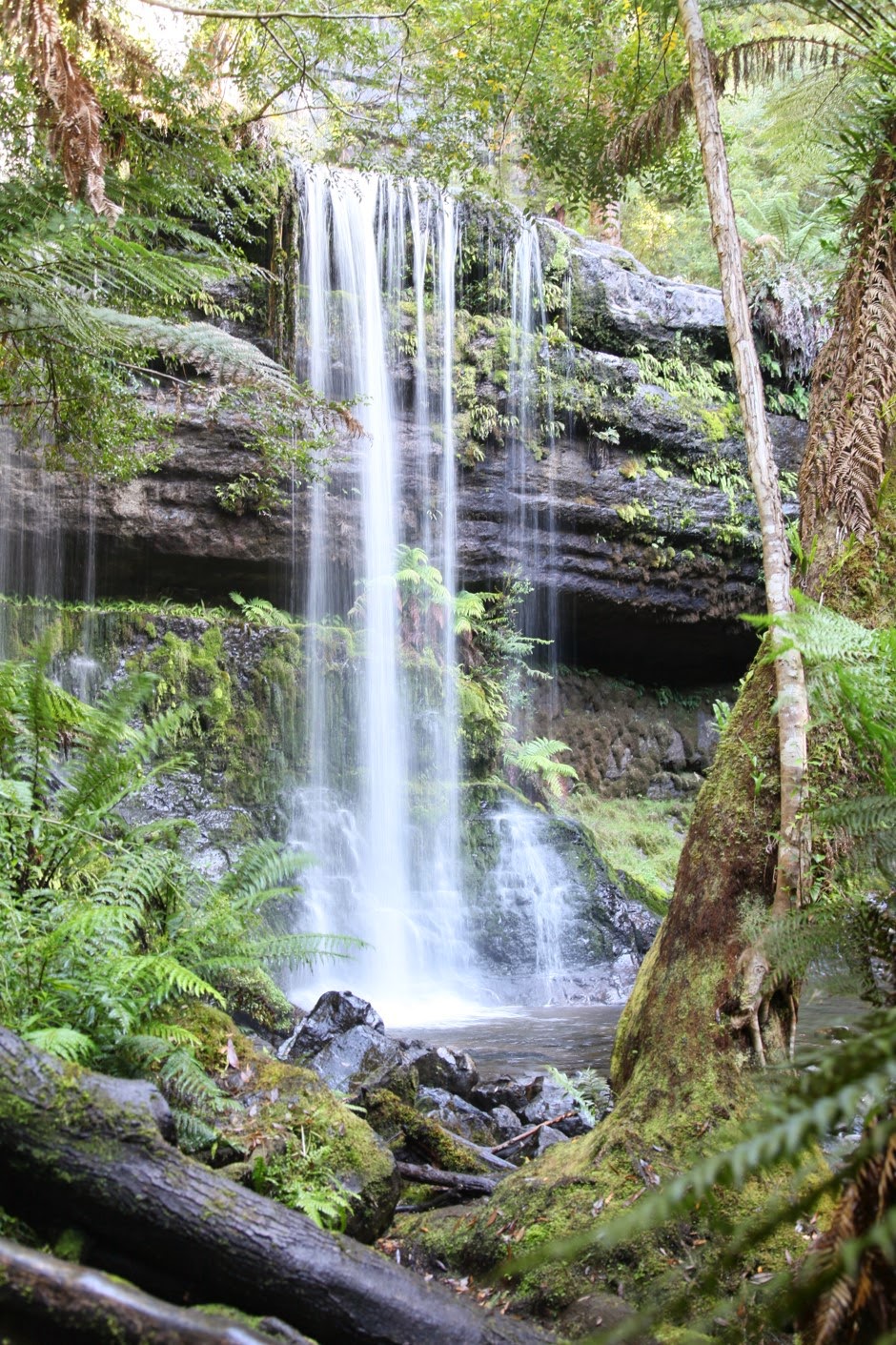 Our last day – and so not a moment to lose! With everything packed
we headed west out of Hobart for Mount Field National Park. There we again
linked a number of separate trails into a single route that introduced us to
the 2nd largest tree species on the planet! The Tasmanian swamp gum
tree Eucalyptus Regnans is actually
the tallest hardwood tree in the world, and also the tallest flowering tree in
the world. Only the Sequoia redwoods of California, which are softwoods, are
taller. The tallest swamp gum ever found was an astounding 98m high! The walk
through this forest was probably the most visually stunning experience of the
entire holiday, and only a few other treks come to mind that equal or exceed
the majesty of this place.
Our last day – and so not a moment to lose! With everything packed
we headed west out of Hobart for Mount Field National Park. There we again
linked a number of separate trails into a single route that introduced us to
the 2nd largest tree species on the planet! The Tasmanian swamp gum
tree Eucalyptus Regnans is actually
the tallest hardwood tree in the world, and also the tallest flowering tree in
the world. Only the Sequoia redwoods of California, which are softwoods, are
taller. The tallest swamp gum ever found was an astounding 98m high! The walk
through this forest was probably the most visually stunning experience of the
entire holiday, and only a few other treks come to mind that equal or exceed
the majesty of this place.
And it was not just the two of us that were left with such an
indelible impression. French explorer Bruni D’Entrecasteaux first sighted
Tasmania in 1792, and was so mesmerised by these giant forests that he wrote the
following entry in the ships diary:
“…trees of an immense height and proportionate diameter, their
branchless trunks covered with evergreen foliage, some looking as old as the
world;
“closely interlacing in an almost impenetrable forest, they serve to
support others which, crumbled with age, fertilised the soils with their
debris;
“nature in all her vigor, and yet in a state of decay, seems to
offer to the imagination something more picturesque and more imposing than the
sight of this same nature bedecked by the hand of civilised man.
“Wishing only to preserve her beauties we destroy her charm, we rob
that power which is hers alone, the secret of preserving in eternal age eternal
youth”
 I could not hope to be as articulate, so it seems fitting to close
this account of our holiday to Tasmania with Bruni’s sentiments. This island is
indeed a wild and rustic place, teeming with wildlife, and home to an immense
diversity of landscapes, flaura and fauna. Thankfully, the people of Tasmania
have come to realise that only Mother Nature, not mankind, can preserve this
unique habitat for generations to come, and so have entrusted much of the land back
to Her stewardship through creation of numerous national parks. We can only
hope that the timber industry does not find a way to access their abundant
resources and denude the very essence of these fabulous places.
I could not hope to be as articulate, so it seems fitting to close
this account of our holiday to Tasmania with Bruni’s sentiments. This island is
indeed a wild and rustic place, teeming with wildlife, and home to an immense
diversity of landscapes, flaura and fauna. Thankfully, the people of Tasmania
have come to realise that only Mother Nature, not mankind, can preserve this
unique habitat for generations to come, and so have entrusted much of the land back
to Her stewardship through creation of numerous national parks. We can only
hope that the timber industry does not find a way to access their abundant
resources and denude the very essence of these fabulous places. 







































